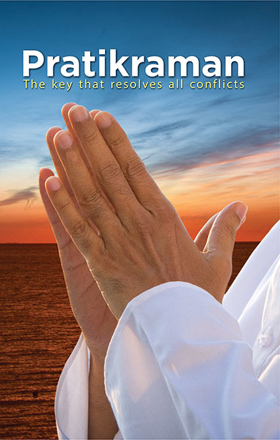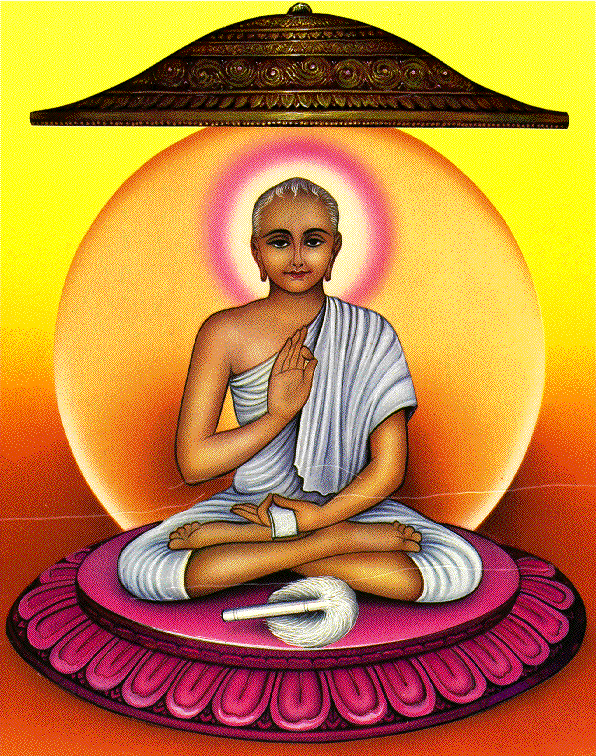The soul is unattached and has infinite perception, knowledge, and energy in its purest form. A worldly soul lacks these qualities because it is tainted by karmas. We overcome our karmas and elevate our souls to liberation by adhering to religious principles and performing pious acts. The Jain pratikraman is one of the most significant religious practices, also known as rituals. There are many different kinds of religious activities. We daily repent of our non-meritorious actions during praktikraman. We acknowledge our errors and ask for forgiveness, thereby reducing the intensity of our karmas and breaking free of their karmic bonds. Six avshyakas (essential rituals) make up Jain Pratikraman. These are:
Samayik is a state of equanimity.
Chauvisantho is the act of worshipping the twenty-four Tirthankars.
Vandana is the act of saluting the sadhus (monks) and sadhvis (nuns).
Pratikraman is the act of recognizing what we have done wrong and making notes about it.
Kayotsagga is the act of soul meditation.
Pratyakhyan is the act of renunciation.
Samayik
Not only do we abstain from all worldly activities during samayik, but we also avoid attachment and aversion. We are able to control our passions and desires thanks to this activity. We go to a quiet location and don simple, clean white clothes to get ready for the samayik. While in the samayik, we present the Navkar Mantra, read sacred texts, perform reflection, and so on. The sadhus who live in the samayik for the entirety of their lives can be seen in the samayik. It directly inspires us to live a sadhu or sadhvi’s life.
Chauvisantho
The word “chouvisantho” refers to the worship of the twenty-four Tirthankaras. We express our reverence for the twenty-four Tirthankaras by reciting it. As we recite this, we are reminded of how these Jinas triumphed over their inner enemies, such as rage, ego, greed, and deceit, likewise, this inspires us to emulate them. Chaturvinshatistava is another name for it.
Vandana
During vandana, we show the monks and nuns our respect by bowing down to them. They are currently our religious preceptors and guides. We overcome our ego and anger by bowing down and becoming humble as a result. Additionally, it motivates us to emulate them. We bow down to Arihantas who are currently living far away from here if there is no monk or nun present.)
Pratikraman
The word “pratikraman” is a combination of the words “return” and “violation” (atikraman). It refers, literally, to returning from violations. As Jain householders, we should notice the twelve minor commitments to limit the viciousness towards other residing creatures which thusly limits the harm to our own spirits. We look back on our actions during Pratikraman to see if any of these vows were broken. We purify our souls, ask for forgiveness for our actions, and improve our future activities in this manner. We ought to anticipate the day when we will be able to take these vows if we have not already done so.
Typically, Pratikraman is performed twice daily: Raisi (morning) Pratikraman is performed once in the morning, and Devasi (evening) Pratikraman is performed once in the late evening, for repentance of actions we may have taken during the day. A Pakshik (fortnightly) Pratikraman, which is performed once every fifteen days, is recommended for those who are unable to perform daily pratikraman. Some people simply do not have the time for that; Once every four months, they should perform a Choumasi (quarterly) Pratikraman. However, if a person lacks the time, they should perform Samvatsari (yearly) Pratikraman once a year, which is required of every Jain. By confessing our sins during praktikraman, we can free our soul from the grip of karma and avoid repeating them in the future. The bond of karmas to the soul becomes severe and even more difficult to break if we do not repent for our actions at least once a year. In point of fact, pratikraman should be performed as soon as one realizes they have committed a sin.
Kayotsargga
Kayotsargga Kaya, which means body, and utsargga, which means to give up, make up the word kayotsargga. Kayotsargga means to give up one’s physical comfort and body movements, to remain steady in a standing or other posture, to focus on the true nature of the soul as being separate from the body, or to recite the navakar mantra or the Chauvisantho mantra. Pure kayotsarga is a type of meditation, and by practicing it, we gradually gain control over our mental, verbal, and physical activities.
Pratyakhyan
Pratyakhyan is a formal abstinence from certain activities that slows or stops the flow of karmas. Pratyakhyan teaches us to control our desires and prepares us for greater abstinence.
As a result, the pratikraman teaches us to control our impulses, encourages us to respect others’ efforts, and points us in their directions.





